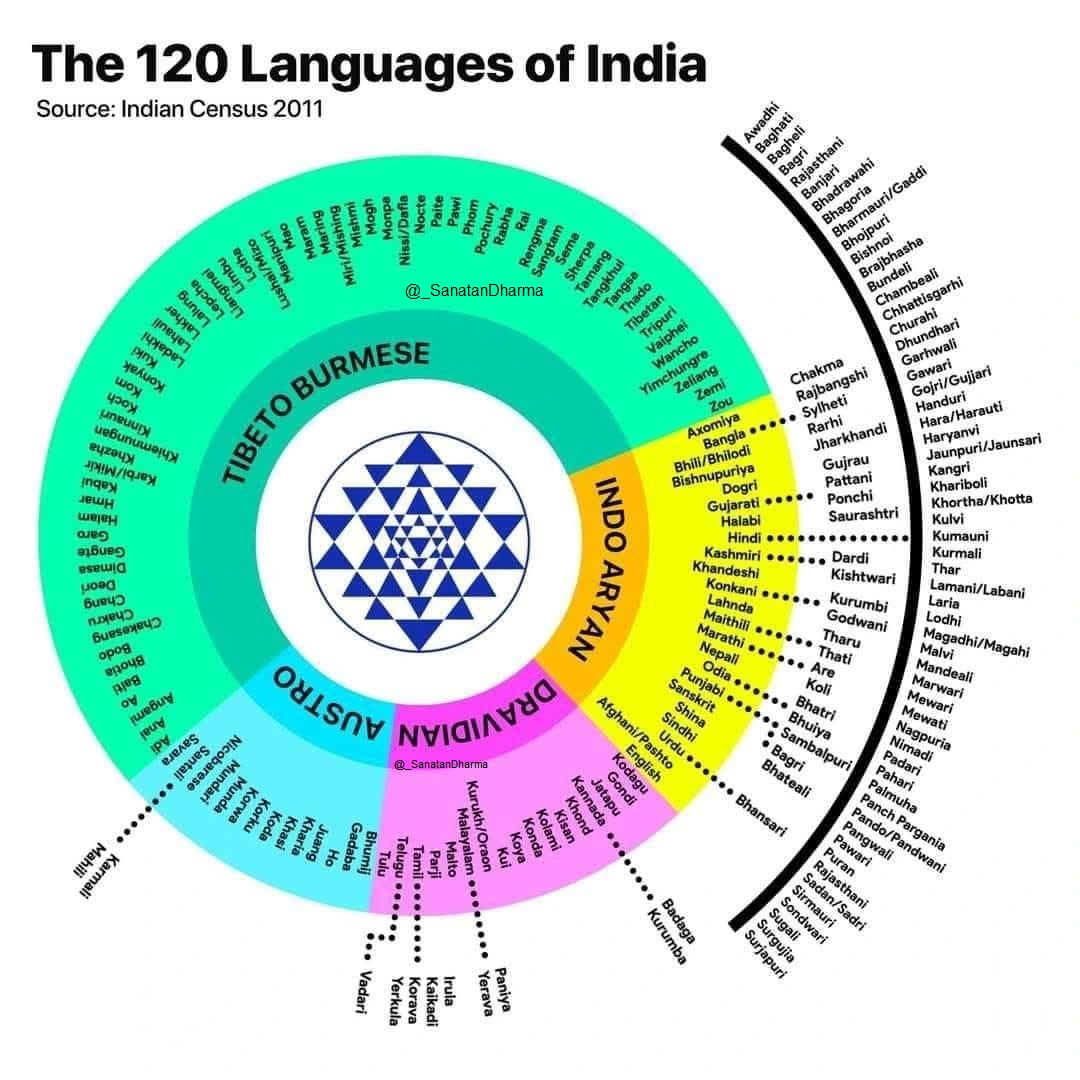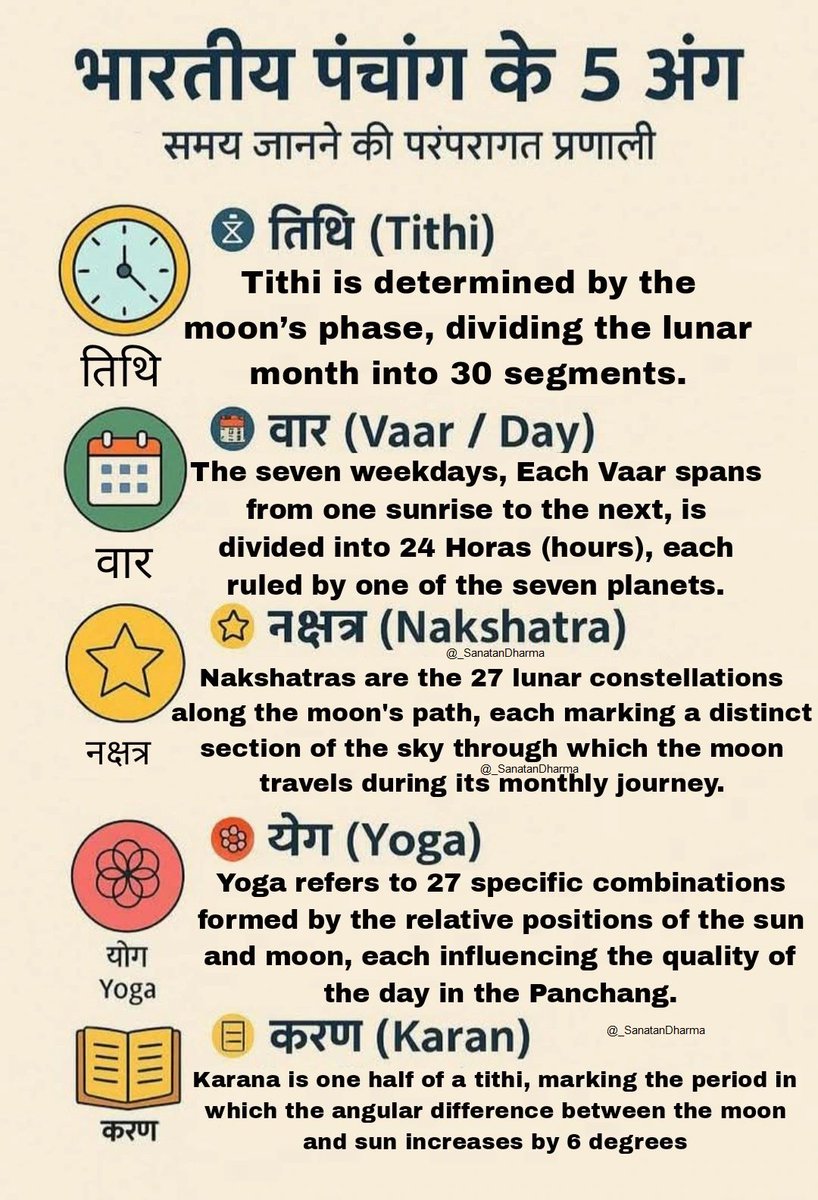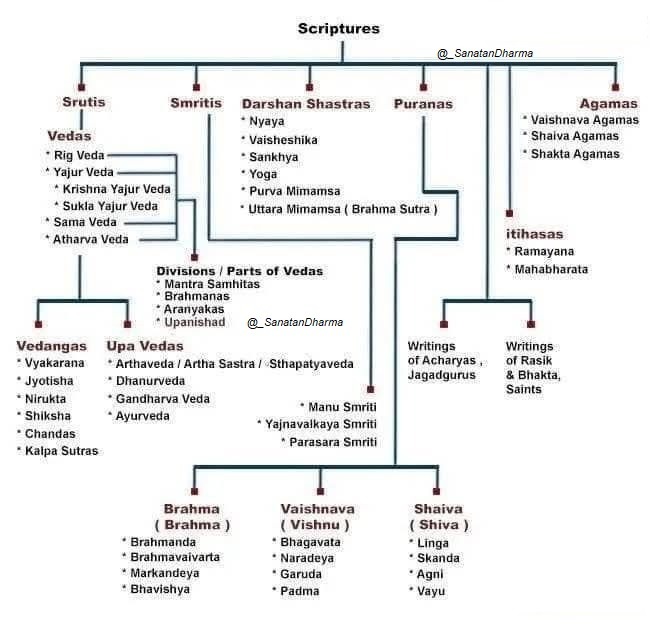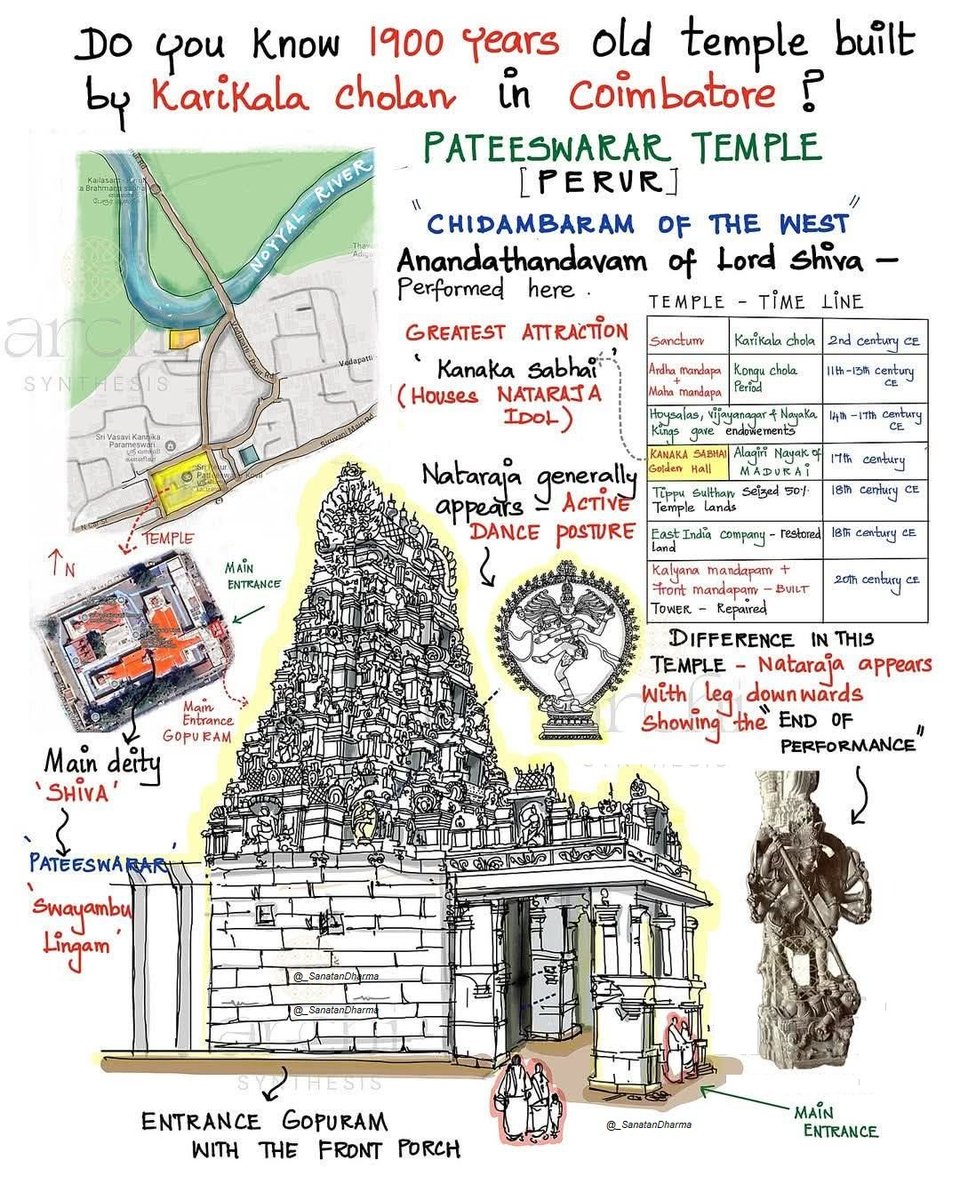120 Languages of India 🇮🇳A Tapestry of Culture & Civilization
India doesn't just speak one language.
It sings in 120+ tongues, echoing its ancient soul, diverse heritage, and unbroken civilizational legacy.
🧵#Thread Let’s dive into the linguistic miracle that is Bharat👇
India doesn't just speak one language.
It sings in 120+ tongues, echoing its ancient soul, diverse heritage, and unbroken civilizational legacy.
🧵#Thread Let’s dive into the linguistic miracle that is Bharat👇

1. Indi -The Tower of Tongues .
According to the 2011 Census, India is home to:
122 major languages
1,600+ mother tongues
4 major language families
No other nation has such depth in its spoken word.
According to the 2011 Census, India is home to:
122 major languages
1,600+ mother tongues
4 major language families
No other nation has such depth in its spoken word.
2-The 4 Major Language Families of India:
Indo-Aryan (Spoken by ~78%)
Dravidian (~19%)
Austroasiatic (~1.2%)
Tibeto-Burmese (~1%)
Each family is a cultural world in itself-with unique roots, rhythms, and richness.
Indo-Aryan (Spoken by ~78%)
Dravidian (~19%)
Austroasiatic (~1.2%)
Tibeto-Burmese (~1%)
Each family is a cultural world in itself-with unique roots, rhythms, and richness.
3. Indo-Aryan Languages (North, West, East India)
Hindi
Marathi
Bengali
Punjabi
Gujarati
Assamese
Urdu
Rajasthani
Maithili
Sindhi
…and dozens more.
These evolved from Sanskrit via Prakrits.
They’re the voice of the Vedas, epics, and freedom struggle.
Hindi
Marathi
Bengali
Punjabi
Gujarati
Assamese
Urdu
Rajasthani
Maithili
Sindhi
…and dozens more.
These evolved from Sanskrit via Prakrits.
They’re the voice of the Vedas, epics, and freedom struggle.
4. Dravidian Languages (South India)
Tamil (Oldest living classical language)
Telugu
Kannada
Malayalam
Tulu
Gondi
Kodava
These languages predate Sanskrit and have a literary heritage as deep as the oceans they neighbor.
Tamil (Oldest living classical language)
Telugu
Kannada
Malayalam
Tulu
Gondi
Kodava
These languages predate Sanskrit and have a literary heritage as deep as the oceans they neighbor.
5. Austroasiatic Languages (Tribal Heartlands)
Mundari
Santhali
Ho
Kharia
Korku
Bhumij
These are among the oldest languages on Earth, spoken by Adivasis-the original voices of the Indian subcontinent.
Mundari
Santhali
Ho
Kharia
Korku
Bhumij
These are among the oldest languages on Earth, spoken by Adivasis-the original voices of the Indian subcontinent.
6. Tibeto-Burmese Languages (North-East India & Himalayas)
Bodo
Mizo
Meitei (Manipuri)
Naga languages
Bhutia
Lepcha
Dzongkha-influenced dialects
These reflect the Buddhist, tribal, and Himalayan traditions of India’s sacred East.
Bodo
Mizo
Meitei (Manipuri)
Naga languages
Bhutia
Lepcha
Dzongkha-influenced dialects
These reflect the Buddhist, tribal, and Himalayan traditions of India’s sacred East.
7. Sanskrit: The Silent Source 🕉️
Though not widely spoken today, Sanskrit lives on through every major Indian language-in grammar, vocabulary, and spirit.
It is the mother river from which many of these linguistic streams flow.
Though not widely spoken today, Sanskrit lives on through every major Indian language-in grammar, vocabulary, and spirit.
It is the mother river from which many of these linguistic streams flow.
8. India’s Constitution Recognizes 22 Official Languages .
Including:
Hindi
English
Tamil
Telugu
Urdu
Punjabi
Bengali
Malayalam
… and more under the 8th Schedule.
But the heart of India speaks in hundreds more.
Including:
Hindi
English
Tamil
Telugu
Urdu
Punjabi
Bengali
Malayalam
… and more under the 8th Schedule.
But the heart of India speaks in hundreds more.
9. Language is more than communication.
It’s:
A cultural identity
A musical expression
A literary heritage
A spiritual vibration
🇮🇳 And India has preserved them all-not by force, but by faith.
It’s:
A cultural identity
A musical expression
A literary heritage
A spiritual vibration
🇮🇳 And India has preserved them all-not by force, but by faith.
10. A Nation of Many Voices, One Soul .
India teaches the world:
Unity is not uniformity.
It is the harmonious symphony of 120+ languages, each telling the same eternal story -of dharma, diversity, and dignity.
India teaches the world:
Unity is not uniformity.
It is the harmonious symphony of 120+ languages, each telling the same eternal story -of dharma, diversity, and dignity.
11. Final Thought : While the world fights over one language,
India celebrates 120+ with open arms.
🚩Bookmark this thread.
🔁 Retweet to spread the pride.
❤️ Like if you believe India’s languages are her greatest strength.
🤝Follow @_SanatanDharma for more insights on culture, Dharma & civilization.
#LanguagesOfIndia
India celebrates 120+ with open arms.
🚩Bookmark this thread.
🔁 Retweet to spread the pride.
❤️ Like if you believe India’s languages are her greatest strength.
🤝Follow @_SanatanDharma for more insights on culture, Dharma & civilization.
#LanguagesOfIndia
• • •
Missing some Tweet in this thread? You can try to
force a refresh










